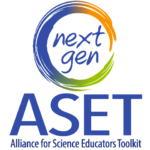
Crosscutting concepts (CCCs)
Overview
The seven Crosscutting Concepts (CCCs) identified in A Framework for K-12 Science Education (NRC, 2012) are:
- Patterns
- Cause and effect
- Scale, proportion, and quantity
- Systems and system models
- Energy and matter
- Structure and function
- Stability and change
These seven CCCs were included in the Framework based on their application in all domains of science. Since these CCCs are found as common themes across science and engineering fields, they can be used to help students develop a coherent and scientifically based view of the world by connecting science concepts, practices, and domains. The repetition of CCC use in learning of multiple disciplinary core ideas demonstrates the interrelated nature of science, linking the different domains of science for students (NRC, 2012).
“The crosscutting concepts have application across all domains of science. As such, they provide one way of linking across the domains…” (NRC, 2012)
While you may bring in elements of various CCCs within one lesson or unit, you should select one or two of the CCCs upon which to focus instruction for a given lesson or unit. Curriculum should be planned so that, while each lesson or unit focuses on the use of one or two CCCs, each CCC is present in multiple units throughout the year to demonstrate their use across multiple core ideas and contexts. Using a single CCC as a theme across multiple lessons or units also functions to link multiple scientific ideas for students.
Instructions for 3-D Map
List the primary Crosscutting Concept and its specific components in which students will engage within your lesson or unit.
ASET Tools to Guide your Thinking about Crosscutting Concepts
The ASET Crosscutting Concepts Tool is designed to guide you to analyze: How are students engaged in the specific components of the CCC that you have selected for your lesson or unit? Through the use of this tool, you will be guided through:
- Evaluating how well you are including particular components of the CCC around which you are targeting instruction; and
- Reflecting upon what areas need strengthening or have not been addressed in your instruction around the targeted CCC.
This tool is continually evolving and may have changes or additions made as more input is provided.
External Resources
A Framework for K-12 Science Education
Chapter 4 – Dimension 2: Crosscutting Concepts (pg 83-102)
NGSS Appendix G: Crosscutting Concepts
References
National Research Council. (2012). A Framework for K-12 Science Education: Practices, Crosscutting Concepts, and Core Ideas. Committee on a Conceptual Framework for New K-12 Science Education Standards. Board on Science Education, Division of Behavioral and Social Sciences and Education. Washington, DC: The National Academies Press.
